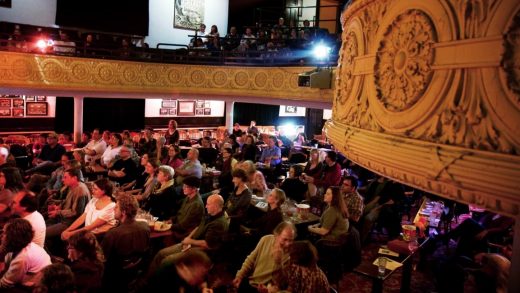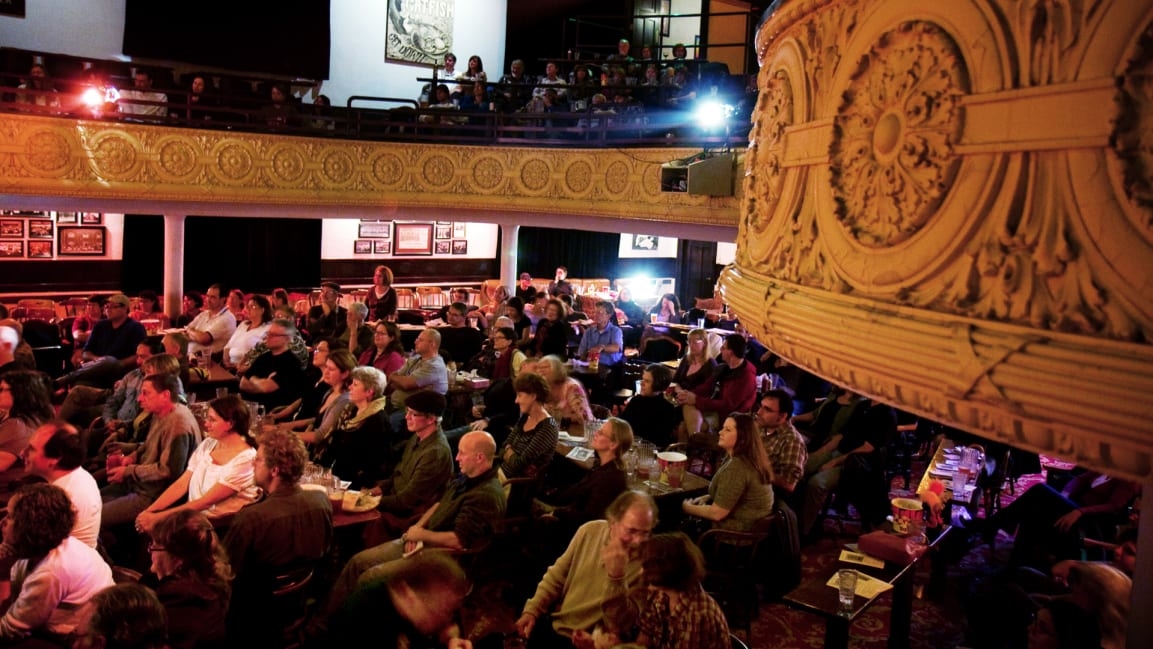Luxury cinemas are fighting Netflix with steak tartare, expensive booze, and gourmet popcorn
Nothing pairs better with a cold rainy Sunday and a warm baby Loxodonta quite like a Rockaway Nitro Black Gold Stout. About one-third of the way through Tim Burton’s Dumbo, I ordered a second, and as it was delivered to me in the dark, I was struck by the scene where V.A. Vandevere (Michael Keaton)–evil, conniving moneybags and Dreamland amusement park owner–explains to the scrappy, DIY road circus owner Max Medici (Danny DeVito) that of course he should bring his entire operation, airborne pachyderm included, into his opulent fold. Why? Because the future of entertainment is bringing the people to you, not the other way around.
Sipping Dumbo suds at Alamo Drafthouse in Downtown Brooklyn, I couldn’t have agreed more, and as attested by the typical full house, I was not alone. Alamo Drafthouse is within walking distance of my family’s apartment, but it’s hardly the only “dine-in” option–as theaters where you can order a meal while you watch a movie are known in industry jargon–within even a couple of miles. (The term “cultureplex” has also been bandied about, but it will not be here. I prefer the term full-service movie theaters.) On that Sunday afternoon, I went to Dumbo because it was an outing with my wife and daughter. However, had I been flying solo, though, I would’ve hit the newly renovated Nitehawk Cinema in Park Slope for the Matthew McConaughey stoner flick The Beach Bum, making a point of ordering the Key Zest–coconut-breaded calamari with key lime dipping sauce–and downing it with a frozen, multi-rum concoction called “Lost in the Moonfog,” both from its special thematic menu. If it had been date night? My wife and I could have hopped the subway to downtown Manhattan’s iPic to see Us all cuddled up with the blankets and pillows in the first-class, airline-esque dual seating pods. What if we wanted to meet a group of friends for brunch before deciding if a movie should take precedence over a nap? Then it would have been Metrograph on the Lower East Side, the beautiful, reimagined retro spot with a classic Hollywood-style commissary offering everything from steak tartare to a “Writer’s Menu” of strong cocktails that could bring W.P. Mayhew to his knees.
In the age of streaming and on-demand and bit-torrenting and hyper-speed release cycles and home theaters and even apparently, 1%-ers getting Endgame delivered right to their in-home Imaxes or whatever, there’s a school of thought that where you see a movie doesn’t matter. “I don’t disagree that going to the theater to see a movie is a great experience,” Netflix chief creative officer Ted Sarandos told the press last December. “I don’t think emotionally it’s a different experience than seeing a movie on Netflix. It is a different physical experience for sure.”
But the “old-fashioned” way of paying money to sit in a windowless room with a bunch of strangers hasn’t diminished at all. In fact, it’s flourishing and the options are growing. The major players like AMC, Regal, and Cinemark dominate, but this new breed of theater is increasingly seen as an opportunity for growth. Last fall, Marcus, the number-four player, acquired the New Orleans-based Movie Tavern chain for $126 million. Dallas’s Studio Movie Grill and Alamo, which is headquartered in Austin, both cracked 2019’s Giants of Exhibition list published by industry analyst Boxoffice, ranking number 13 and 17 respectively. “These types of theaters came up with solutions to problems that for most of the life of cinema, moviegoers didn’t know they had,” says Stephanie Zacharek, film reviewer for Time and a 2015 Pulitzer finalist for criticism while at the Village Voice. “There’s a lot of talk about television and movies morphing into a great blob of entertainment, that there is no difference, and it drives me crazy.” As we saw late last year with the Netflix controversies around whether and how Roma would receive a theatrical release, serious filmmakers want a theatrical release because they want to share their art on a large-screen canvas. And if you can do it in a seat that’s both comfortable and reservable, and where the truffle popcorn can be paired with something quaffable, like say an $85 bottle of Piper-Heidsieck Champagne (as you can at iPic), all the better. “Overall, the movie business is healthy,” says Daniel Loria, editorial director of Boxoffice, which has covered movie theaters since 1920. “What is dying is the standard suburban, cookie-cutter multiplex model, with the tacky carpet and uniform concessions.”
As someone who has probably averaged two theatrical movies a month for 40-odd years, I wholeheartedly agree. As should already be evident, the current wave of full-services movie houses isn’t solely a New York or Los Angeles phenomenon. It’s happening in underserved markets all across the country at independent single screens and small regional chains, such as Flix Brewhouse, across the Midwest and Southwest where beer is made onsite.
So how is the theatrical landscape being completely upended by the growth of these places? To find out where we are and where we’re headed in this future of full-service moviegoing, I immersed myself in Gotham’s new cinematic universe–well, within a short jaunt at least–while also exploring a city with a longstanding brew-and-view culture and then going back to where it all began for me, the place central to my filmic evolution–a town starting from scratch.
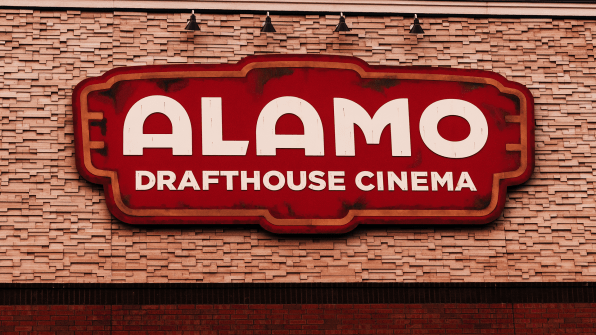
The biggest flying elephant in the room
In 1997, when Tim League opened the first Alamo Drafthouse in Austin, a single-screen theater, there was little indication that the brew-and-view movie theater would become the vanguard of the IRL filmic experience. As recently as 2010, Alamo was a chain of 10 theaters, with only one outside the Lone Star State and annual revenue of $18 million. Today, though, there are 37 locations in 10 states (with four more slated to open in 2019, including downtown Los Angeles). In 2018, revenue was $300 million across all theaters, half of which are owned outright by Alamo, with the others franchised to local operators. This means that the growth coincided with streaming’s rise and with it, proclamations of the theater’s death. League’s goal is to have 50 Drafthouses open within five years.
Bucking the trend of restoring some faded Art Deco picture palace, his preference is for new buildings like the one in Brooklyn, because theaters can be tailored to his exact specifications, such as allowing for a greater seating capacity for blockbusters. That said, the prototype is malleable: The San Francisco Alamo is a renovated historic 1914 movie house, and Raleigh’s is a retrofitted grocery store.
“Alamo is undeniably a chain now, but we don’t talk about ourselves in that way,” says CEO and cofounder Tim League. “We hire creative movie nerds and give them the voice. The taste of individual Alamo Drafthouses comes from the manager. We don’t aggregate social media. It’s localized. It’s harder and costs more, but it goes back to why I opened the first one in Austin: I wanted to create the kind of theater I always wanted to go to, which is built around a community of movie lovers.”
From the beginning, rowdy audience-participative screenings have been central to the Alamo Drafthouse blueprint, and that hasn’t changed even as Alamo has expanded. This year will mark the 15th Fantastic Fest. Held in Austin, it’s the largest U.S. celebration of monsters, aliens, axe murderers, and glorious manners of schlock. The outdoor Rolling Roadshow will be back again this summer, which always includes a Jaws showing in the water. But really, on any given “Terror Tuesday,” “Weird Wednesday,” or any day or night really, there’s something different. In Brooklyn, the monthly “Shouting at the Screen” series features the musician Donwill and the comedian Wyatt Cenac playing drinking games throughout blaxploitation flicks. That’s a fun one, but the best event our clan hit up was a one-off “Willy Wonka Party” complete with bubbles, candy, singing, and an appearance by the actual Mike TeeVee and Veruca Salt.
Movies aren’t the only way to bring the geeks together, either. Themed bars are part of the Alamo brand now. Brooklyn’s House of Wax–with its macabre collection of death masks, serial killer statues, and (as every third-grader who wanders in will point to) medically disfigured, freak-show penises–is a destination in its own right. The forthcoming Staten Island Alamo will feature a bar designed in concert with RZA of Wu-Tang Clan around kung fu movies, while the recently opened Omaha location has the Video Vortex, a movie-rental store. DVDs are free, two per week, but bring them back on time (there are late fees).
In another effort to stay ahead–I was in a suburban Boston chain recently that added a perfunctory bar–League has also entered the film distribution game, having cofounded Neon, which released the Oscar-winning I, Tonya; The Beach Bum (Alamo’s specialty was the tequila-centric “420 in Margaritaville”); and last year’s Three Identical Strangers, one of four documentaries that grossed more than $10 million, a first in movie history. (Alamo’s rise hasn’t been totally free of controversy: In 2016, League accepted the resignation of movie blogger Devin Faraci after he was accused of sexual assault, and then he had to publicly apologize a year later when more reports of harassment became public and it came to light that Faraci was still employed by Alamo.)
“Brooklyn cost more than we expected, but it’s done better than we ever thought,” says League, who has taken over a floor from the Century 21 department store and begun work on a 25,000-square-foot expansion to bring the total to 15 theaters in 2020. “We’re going to more than double our screen size.”
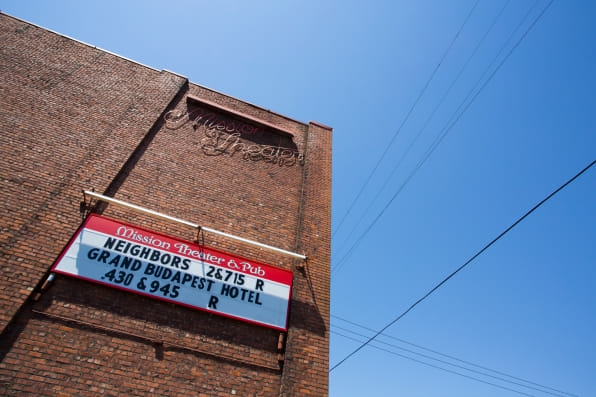
The arms (rest) race to coddle moviegoers
Alamo Drafthouse tends to get credit for kick-starting this new era of filmgoing, but Portland’s McMenamins Brewery was years ahead of them. At some point in the mid-’90s, I had the mind-blowing experience of ordering a local beer–BEER!–in a movie theater, if fuzzy memory serves, the Bagdad (a grand old ornate palace built by Universal Pictures in 1927 and reopened by the brewery in 1991).
“It just made sense to us, who wouldn’t you want to drink at the movies? Just because it hadn’t been done before?” says Renee Rank Ignacio, McMenamins director of marketing. “People loved the idea, sitting on those comfy couches with a beer and a burger, and it became part of the Portland fabric.” In the handful of times I have since visited the City of Roses, an outing to one of the growing number of brew-and-views was essential. It has become as ingrained in Portland’s culture as IPAs, beards, flannel, and white dudes making Asian food.
But the sheer novelty of ordering suds brewed just feet away from the big screen isn’t enough in an era of Alamo-esque competition. The Living Room Theaters offer a full menu, cocktails like the $10 “Monkey Love” (very spicy, you’ve been warned) and a 3D screen. Studio One Theaters takes the luxury moviegoing even further, with dinner items like NY Strip Steak, cassoulet, and Yakisoba Katsu served in custom-furnished, penthouse screening rooms themed to world cities like Tokyo, Istanbul, Paris, and New York. In response, The Bagdad has been renovated with new screens, seats, and sound, and now shows first-run films. “Audiences want more today, so like with our beer, McMenamins evolves,” says Ignacio.
The battle in Portland to deliver the most pampered trip to the cinema is rather quaint, though, when compared with what’s happening in my fair ‘burg.
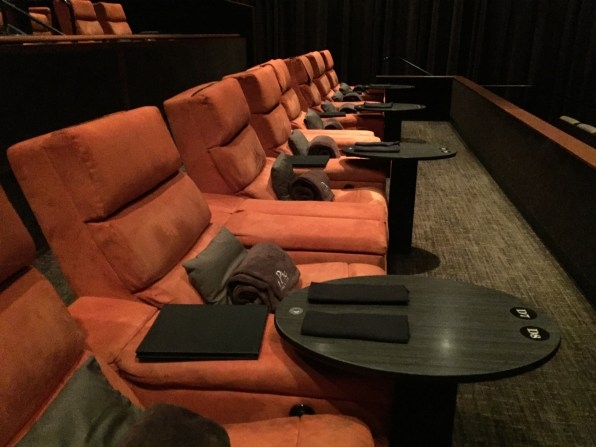
I’m not going to lie, for a $30 ticket, I wish my Monday iPic matinee options had been more robust. I selected Green Book, which I wasn’t jonesing to see, but my other choices were Madea: No More Madeas and that gritty Liam Neeson remake of Mr. Plow. That said, when you have a pillow, blanket, unlimited popcorn, $17.50 Green Goddess Turkey Sliders, a reclining microsuede seat, and a gorgeous post-show upstairs bar looking out on the East River, does it matter what’s showing?
I ended up flying solo in the pod made for two. Lying nearly 180-degrees flat next to a complete stranger could be a mite awkward, although the scenario has the meet-cute markings of a solid rom-com. (To answer your next question . . . I am not answering your next question, other than to say the seats are cozy and, presumably, regularly maintained.)
“It seems a little strange at first, but my wife and I sat in those seats with champagne at A Star Is Born, and it was a hell of a date night,” says Boxoffice‘s Loria. “It’s a premium price for sure, but no theater offered that particular experience for that movie and that’s why we chose iPic. Whatever a theater can do to distinguish themselves is crucial.”
In addition to comfortable privacy, iPic separates itself by offering tiered seating prices more akin to a sporting event. The VIP package made my ticket $30, but there are cheaper seats ($20 in New York City, but like Alamo, prices vary by locale). The first iPic opened in 2007 in Milwaukee, and there are now 16 locations in urban settings and wealthier suburbs, with the most recent one premiering in Delray Beach, Florida.
“We are all showing the same films, [so] the movie itself becomes a commodity,” says iPic CEO Hamid Hashemi, who has been in the exhibitor business for a long time, longer than Portland flicks with Porters. “The challenge is to win the audience by offering a better experience and amenities.” When Hashemi started in 1984, “nachos were a game-changer,” he says of his multiplex days, though he’s being modest: Hashemi was the first to feature onsite childcare, which Loria says is now being bantered about as the next amenity in full-service moviegoing.
Hashemi has six more iPics under construction and another 12 in development, and he says he could add another five in New York City alone. It’s all in the brand names. “In the old days, people use to say, ‘We’re going to the movies,’ never mentioning the theater chain, because it was simply a matter of proximity,” he says. “Now people say they’re going to Alamo, Nitehawk, or iPic, because the theaters deliver the specific experience moviegoers want.”
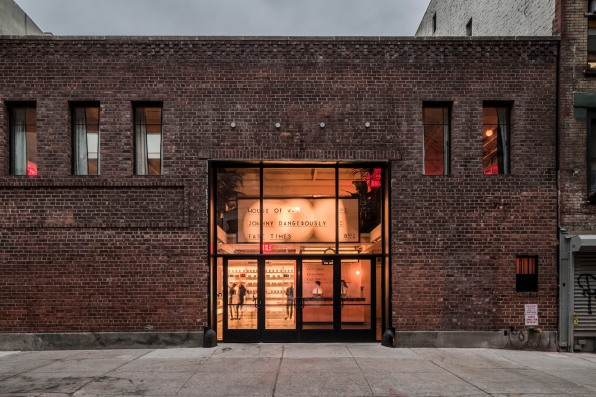
[Photo: courtesy of Jeremy Liebman]
To that list, I’d add Metrograph, a different type of sophisticated filmgoing that inhabits the past, present, and future all at once. Although I didn’t see a movie there, I did sit and have a proper breakfast of poached eggs and creamed spinach in The Commissary–the eatery inspired by the glory days of MGM, Warner Brothers, and the like–before touring the gorgeous theater with its Art Deco railings and seats crafted from repurposed wood from the shuttered Domino Sugar factory.
Everything at Metrograph is personally curated–including a bookstore and the worldly Wonka-esque candy wall–a culmination of all the things film fanatic owner Alexander Olch envisioned in a movie house. Even the the bimonthly movie guide is a work of art, complete with essays, photos, compiled with the panache of a Cannes gift-bag giveaway. Olch, who is a film director, mens accessories designer (ties and pocket squares), and creator of fashionable stores, grew up in Manhattan going to movies at famed theaters like the Beekman, the Plaza, and the Ziegfeld, which is where his 2008 documentary The Windmill Movie debuted.
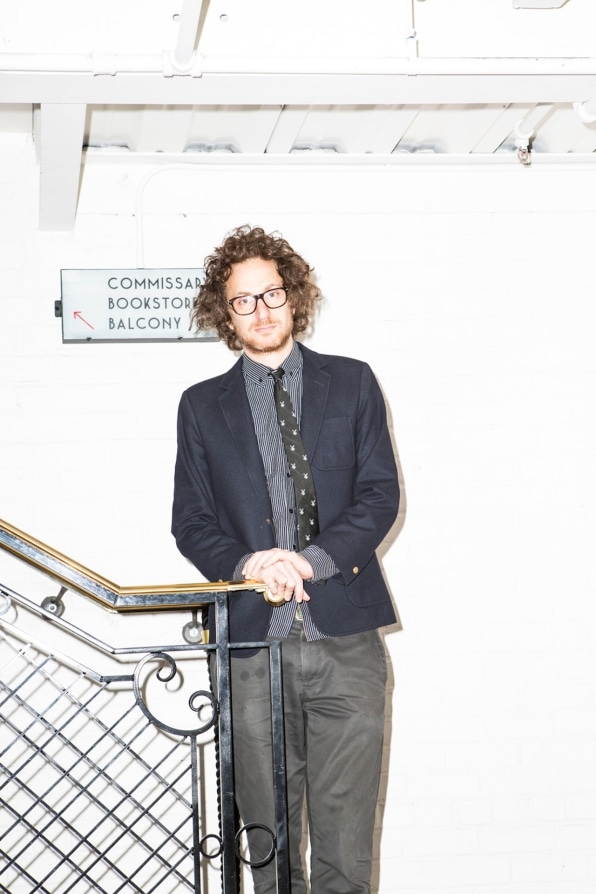
[Photo: courtesy of Jeremy Liebman]
“I can remember seeing specific movies at those theaters, it was special, and I felt like it was an experience that was getting lost. All those places are gone,” says Olch. “I set out to recreate the magic. It’s a romantic ideal of what I loved as a kid. We acquired the Dolby audio server from the Ziegfeld, so you’re listening to a bit of movie history in the big theater.”
Olch found the old food-storage warehouse of his dreams on the Lower East Side in 2014, and Metrograph opened two-and-a-half years later. It’s a deliberate mix of old and new, a contrast of old design notes from various Hollywood eras with the open industrial, exposed-wire vibe of 21st-century New York City. If it sounds like a Wes Anderson set, it kind of is. The acclaimed director is a regular who brought Isle of Dogs in early and also showed six Akira Kurosawa films that inspired him. Metrograph shows 800 films a year, and it has become a go-to for premieres (some 60 a year), sneak previews like The Beach Bum, and special events such as Martin Scorsese and Robbie Robertson hosting the 40th-anniversary of The Last Waltz.
Like Tim League and Alamo, Olch has plans beyond his movie clubhouse. Metrograph Pictures has acquired some 15 films, distributing unusual and hard-to-categorize movies that play first in his theater. Similarly, this spring, Olch will be traveling to potential new Metrograph sites.
As Netflix rolls on and we’re on the cusp of almost every major studio releasing its own streaming service, it might seem like an odd time for movie-theater expansion. But one thing Olch wasn’t concerned about, nor anyone else I spoke with, was competition from streaming. If one is in the theater-owning game, much less ones with sardine toast and stiff cocktails, Netflix-in-bed is not an issue. The message: Offer a hell of a night out and we’ll be fine.
Homecoming
The first movie I remember seeing in the theater still boggles my mind: Bugsy Malone, Alan Parker’s long-forgotten musical ode to Jazz Era gangsters on Metrograph’s Lower East Side. The entire cast was kids, top-lined by Jodie Foster and Scott Baio, and they were all decked out in 1920s finery like pinstriped suits, flapper dresses, feather boas, fedoras, and painted-on mustaches. The thing that’s stuck with me all these years–besides the Tommy guns that shot whipped cream–was the Babcock Theater itself in my hometown of Billings, Montana. I was probably 6 or 7, but I recall being in awe of the giant neon sign outside and the huge screen within, the enormous curtains, and all those people together in the dark watching Dandy Dan and Fat Sam battle among the bike-pedal-powered Cadillacs.
Billings, like so many downtowns, had its core hollowed out by big-box alternatives, and the Babcock stopped showing movies in the early 1990s. (Local legend has it that its exhibition of Back to the Future III, an abomination of a movie, precipitated the theater never to show another movie for almost three decades.)
All is forgiven McFly, because as of last November, the 112-year-old, 750-seat theater is open once again–with cans of local Uberbrew in the offing–thanks to a native entrepreneur who is proving that full-service moviegoing can thrive just about anywhere.
“My wife, Kate, and I would see these trailers for movies that would never play in Billings. We became increasingly frustrated, especially around Academy Awards season, that there were different conversations going on around the country,” says Matt Blakeslee, who at the time was a pastor at a 5,000-member evangelical megachurch. “We thought about maybe moving to a college town like Bozeman, but Billings needed a film community. It felt like a risk: There were no indie films here. But I was young and naive enough to give it a shot. I literally started by googling ‘How to start a movie theater.’”
Beyond wanting better film choices, Blakeslee also needed a career change after a decade in the ministry. (Blakeslee is coy about why he left other than to say that “toeing the company line” no longer resonated with him and Kate, but they have started another smaller church where they can be themselves, so it wouldn’t seem to be a crisis of faith.)
He found a former bowling alley downtown which had been empty for a decade, and it needed a lot of work. There was no heating or plumbing, and 60 years of cigarette smoke had blackened the walls. The Blakeslees raised $130,000 through friends, family, Indiegogo, and an anonymous donor.
The Art House Cinema & Pub opened as a single-screen, non-profit micro cinema in March 2015, serving candy, popcorn, wine and beer. To keep cash flowing, Blakeslee instituted a membership program, which ranges from $35 for a basic one to $1,750 for a “Producer” couple, and 150 people signed up the first year. It’s now up to 500, which he takes as the best sign his goal of conjuring a film community is working.
At first, his former congregation members thought Art House was going to show Christian movies, to be the titular home of Kirk Cameron. That was never the plan, God’s or otherwise. “There’s still a lot of people who don’t exactly get what we do,” Blakeslee admits. “They think all we show is subtitled Iranian films, which we have by the way, but they have no idea of all the different kinds of movies that are out there.”
Art House’s success in finding an audience for more than superhero films in Billings has created the opportunity for Blakeslee to expand. Art House will be adding a restaurant, two more screens, and it’ll undergo a major digital technology upgrade. The plan is to raise $2.1 million to buy the building (which includes rental properties) with $500,000 coming from the community to pull the trigger on a groundbreaking for an opening in early 2021.
While Blakeslee cultivated a community in Billings, the one-time historical centerpiece of its moviegoing legacy begged to be reinvigorated. From the mid-’90s on, various events were staged at the Babcock Theater, including boxing matches and, inexplicably, a vaudeville act. On the whole, however, it was closed to the public, although in the recent past it was renovated by the owners of the much-larger building in which the theater resides. Ownership of the Babcock was transferred back to the city of Billings, which put out a call for proposals.
After a few months of ideas about what kind of venue it should be, Blakeslee had heard enough. “My ego mixed with my love of the Babcock, so I went to our board, and said we have an opportunity to return it to what it’s meant to be, a seven-day-a-week movie house with a glowing marquee,” he says.
Art House won the bid, put in 4K digital projection and sound, splashed on new coats of paint, restored the external ticket booth, and now the Babcock is the first-run jewel of my bygone youthful moviegoing days. Next week, I’m going home for the first time in a few years, can’t wait to check out the lesbian indie Wild Nights with Emily at Art House and Godzilla at the Babcock.
“I’ve always loved what Alamo does in creating an authentic experience around what cinema is, and not just watching movies, but the deeper personal relationships that can grow from it,” says Blakeslee. “I came from the church, with its weekly gatherings and I strongly believe in that idea, but I didn’t know when I started the theater how much more of a community thing it is, more than a consumer thing.”
Well that, and a cool draft beer. As usual, Michael Keaton got it right. See you at the movies.
(50)

